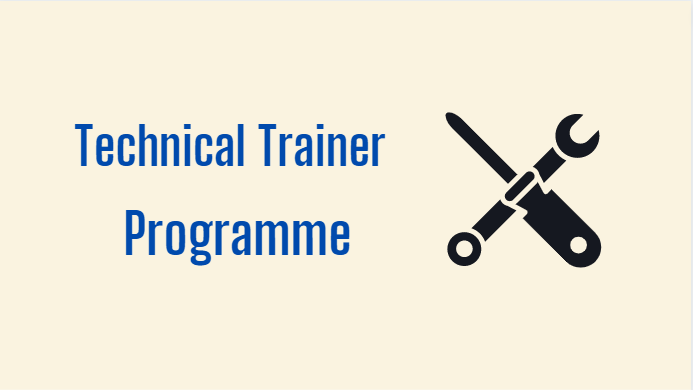Reviewed by: Jayprakash Prajapati | Last updated on December, 15, 2023
The contents of a training program depend on various factors, including the goals of the training, the target audience, and the specific skills or knowledge that need to be imparted. Contents of Training Programme Of 2024. However, a typical training program often includes the following key components.
The contents of a training program include identifying training needs, setting clear objectives, defining the target audience, choosing the training format, developing training content, selecting trainers, creating engaging materials, scheduling sessions, implementing the training, encouraging participation, assessing learning, providing feedback and support, measuring training effectiveness, continuous improvement, providing recognition, addressing compliance and legal considerations, budgeting and resource allocation, ensuring accessibility and inclusivity, offering post-training support, marketing and communication within the organization. These components collectively ensure that a training program is well-structured, effective, and aligned with organizational goals.
- Introduction and Orientation:
- Overview of the training program’s objectives, structure, and expected outcomes.
- Introduction to trainers and training materials.
- Orientation to the training venue and facilities.
- Needs Assessment:
- Identifying the specific needs and skill gaps of the participants.
- Pre-assessment tests or surveys to gauge the current knowledge or proficiency levels of the trainees.
- Core Content:
- The main body of the training program, which includes the essential knowledge, skills, or competencies that participants need to acquire.
- Detailed presentations, lectures, demonstrations, or hands-on activities to convey the core content effectively.
- Practical Exercises and Activities:
- Application of theoretical knowledge through practical exercises, case studies, role-playing, simulations, or real-world scenarios.
- Group discussions and interactive activities to encourage active participation.
- Assessment and Evaluation:
- Formative assessments during the training to measure participants’ progress and understanding.
- Summative assessments or evaluations at the end of the training to determine the effectiveness of the program and the achievement of learning objectives.
- Feedback and Discussion:
- Opportunities for trainees to provide feedback on the training content, delivery, and overall experience.
- Post-training discussions to reinforce key takeaways and address questions or concerns.
- Resources and Reference Materials:
- Provision of training materials, handouts, manuals, or access to online resources that participants can refer to after the training.
- Recommendations for further reading or additional learning resources.
- Customization and Adaptation:
- Tailoring the training content to meet the specific needs of different participant groups or to address unique organizational requirements.
- Technology and Tools:
- Utilization of technology, audiovisual aids, software, or tools relevant to the training subject, if applicable.
- Feedback Mechanisms:
- Establishing channels for ongoing feedback and support beyond the training program, such as follow-up sessions, mentorship, or coaching.
- Certification or Recognition:
- Issuance of certificates or recognition of completion for participants who successfully meet the training requirements.
- Timetable and Schedule:
- A well-structured timetable outlining the duration, sequence, and schedule of training sessions.
- Safety and Compliance:
- Addressing safety considerations and compliance with relevant regulations or standards, especially in training programs related to workplace safety or industry-specific requirements.
- Post-Training Support:
- Providing ongoing support, resources, or access to subject matter experts to assist trainees in applying their newfound knowledge or skills in practical settings.
- Evaluation and Continuous Improvement:
- Conducting post-training evaluations to assess the overall effectiveness of the program and identify areas for improvement in future iterations.
The specific contents and structure of a training program can vary widely depending on the nature of the training, whether it’s related to professional development, job-specific skills, compliance training, or any other purpose. Successful training programs are typically well-planned, learner-focused, and adaptable to meet the evolving needs of participants and organizations.
Creating an effective corporate training program requires careful planning and consideration of various factors. Here’s a comprehensive guide on how to develop a successful corporate training program:
Training Programme Corporate Training Guide
1. Identify Training Needs:
- Assessment: Begin by assessing the specific training needs of your organization. Identify skill gaps, areas for improvement, and training goals.
2. Define Clear Objectives:
- Set Goals: Establish clear and measurable objectives for the training program. What do you want participants to learn or achieve by the end of the training?
3. Determine the Target Audience:
- Audience Analysis: Understand the demographics, job roles, and prior knowledge of the participants. Tailor the training content to their needs.
4. Choose the Training Format:
- Delivery Methods: Decide on the format of the training. Options include in-person workshops, online courses, webinars, on-the-job training, or a blended approach.
5. Develop Training Content:
- Curriculum Design: Create a structured curriculum that covers the necessary topics and skills. Include relevant materials, resources, and activities.
6. Select Trainers or Facilitators:
- Instructors: Choose experienced trainers or subject matter experts who can effectively deliver the content and engage participants.
7. Create Engaging Materials:
- Training Materials: Develop engaging materials such as presentations, handouts, videos, and interactive exercises to support the training.
8. Schedule Training Sessions:
- Timing: Plan the training sessions, considering the duration, frequency, and scheduling that works best for participants and the organization.
9. Implement the Training:
- Delivery: Conduct the training sessions according to the schedule. Ensure that trainers facilitate learning effectively.
10. Encourage Participation:
- Engagement: Promote active participation through discussions, group activities, case studies, and hands-on exercises.
11. Assess Learning:
- Evaluation: Use assessments, quizzes, assignments, or practical evaluations to measure participants’ understanding and progress.
12. Provide Feedback:
- Feedback Mechanism: Offer timely feedback to participants to help them improve. Encourage open communication and questions.
13. Offer Support:
- Resources: Provide additional resources, references, or access to experts for participants who want to delve deeper into the subject matter.
14. Measure Training Effectiveness:
- Evaluation Metrics: Collect feedback from participants and assess whether the training met its objectives. Use key performance indicators (KPIs) to measure success.
15. Adjust and Improve:
- Continuous Improvement: Based on feedback and evaluation results, make necessary adjustments to the training program for future iterations.
16. Provide Recognition:
- Certification: Offer certificates or recognition to participants who successfully complete the training. Recognize their efforts and achievements.
17. Compliance and Documentation:
- Regulatory Compliance: Ensure that the training program complies with any industry-specific regulations or standards.
18. Budget and Resources:
- Financial Planning: Allocate budget and resources appropriately to support the training program effectively.
19. Legal Considerations:
- Intellectual Property: Address copyright and intellectual property issues related to training materials and content.
20. Accessibility and Inclusivity:
- Accessibility: Make training materials and sessions accessible to all participants, including those with disabilities.
21. Post-Training Support:
- Follow-Up: Provide post-training support, mentoring, or coaching to reinforce learning and help participants apply their knowledge and skills.
22. Marketing and Communication:
- Promotion: Effectively market the training program within the organization to ensure awareness and participation.
Creating a corporate training program requires careful planning, execution, and ongoing evaluation. It should align with organizational goals, engage participants, and lead to measurable improvements in skills and performance. By following this comprehensive guide, you can develop a successful corporate training program that adds value to your organization and its employees.
Further reading on ibusinessmotivation.com: For a more in-depth comparison, check out my articles on the Best 101 Online Business, Best Web Hosting, Ecommerce Website Builder, Best Ecommerce Platforms, and Best Domain Registrar to Use This Year.





